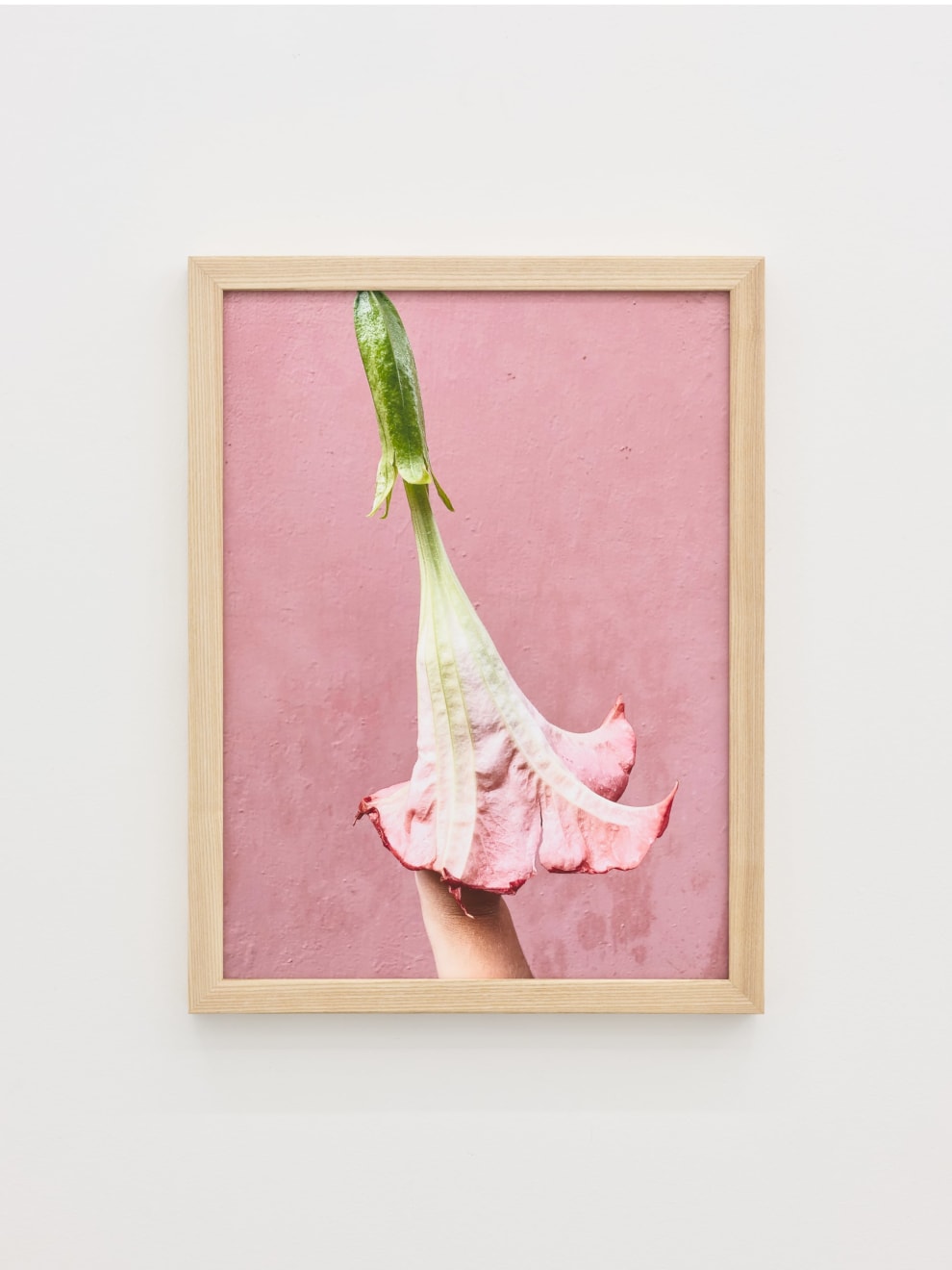Nona Inescu
15 3/4 x 11 3/4 in.
Nona Inescu’s framed photograph Angel’s Trumpet draws inspiration from the interconnectedness of human and plant life. The image portrays the striking juxtaposition of a human hand entwined with an Angel’s Trumpet flower, challenging the division between human and non-human forms. This exploration of the relationship between organic life and human presence reflects Inescu's engagement with posthumanist themes, as in the other pieces in her exhibition Daisyworld at Brooke Benington. Following the Gaia hypothesis and the speculative planetary model by Lovelock and Watson, Inescu delves into the complex entanglements between humans and the environment.
The hand inside the delicate flower suggests an ambivalent relationship that is both symbiotic and disruptive, encapsulating a tension between care and intrusion, gentle care and aggression. Angel’s Trumpets are sought after for ornamental purposes and they are poisonous, containing tropane alkaloids which are highly toxic and give deliriant effects. This inherent duality heightens the tension in the photograph, where the destructive powers of both humans and plants are revealed. The poisonous nature of the Angel’s Trumpet mirrors the harm humans can inflict on the environment.
Exhibitions
Daisyworld, Brooke Benington, London, UK (2024)The Venus Trap, solo presentation with SpazioA Gallery at fiac! (2021)



